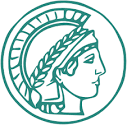Pronoun Paradigm: Abui: clean
Paradigm Details:
Label: clean
Family:
System Type: F
Source: Kratochvíl (2007).
Comment: Owen's "cleaned up version". I've retained only the patient bound pronouns (for S and P). Charlotte is right in entering both patent and actor forms for S; the language works on an actor/undergoer basis. I've selected the inalienable forms for possessors. (Alienable forms are idenical except any form with /a/ has /e/ instead. "The free pronouns serve to express or co-index Actor (A) arguments. (...) [T]he bound pronouns are prefixed to nouns and verbs. Bound pronouns are divided into three formally distinct sets. Pronominal prefixes are polysemous. They combine with verbs to express the Undergoer (U) arguments and with nouns to express possessors." For an overview of the sets and their menings, see Kratochvíl (2007: 76--77). "The single participant of the intransitive verb may be realized as the A or U argument." (Kratochvíl 2007: 177), so that's why the S paradigms are filled with both the A and the O(/U) forms.
Pronoun Paradigm:
| A | S | O | Poss. | |
|---|---|---|---|---|
| 1st (excl) Person Singular | na | na , na- | na- | na- |
| 1st (excl) Person Dual | ni | ni , ni- | ni- | ni- |
| 1st (excl) Person Plural | ni | ni , ni- | ni- | ni- |
| 1st (incl) Person Dual | pi | pi , pi- | pi- | pi- |
| 1st (incl) Person Plural | pi | pi , pi- | pi- | pi- |
| 2nd Person Singular | a | a , a- | a- | a- |
| 2nd Person Dual | ri | ri , ri- | ri- | ri- |
| 2nd Person Plural | ri | ri , ri- | ri- | ri- |
| 3rd Person Singular Gender 1 | di | da- , di | da- | da- |
| 3rd Person Singular Gender 2 | di | da- , di | da- | da- |
| 3rd Person Dual | di | da- , di | da- | da- |
| 3rd Person Plural | di | da- , di | da- | da- |


